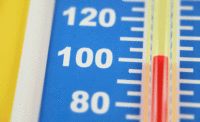Wearable sensor technology
Wearable sensor technology is an old IH concept illustrated by an employee wearing a monitoring device such a noise dosimeter. Exploiting the microphone in a smartphone to create an app to measure sound levels is now included among the wearable sensor technology for the masses.
Using microphones, accelerometers, gyroscopes, GPS, magnetometers and other components of smartphones to do many things is very ingenious. But this is only the tip of the technology iceberg. Button, badges, wristbands, eye-glasses, “smart-clothing” and anything that may be worn or hooked onto the body and embedded with a variety of sensors to detect and measure many things that an IH may look for is new technology.
Example: chemical sensors
Companies such as TZOA, AirBeam, AirBot, Sensaris, AirWaves, Clarity, Sensbloks, and Chemsense are perfecting wearable sensor technologies to measure airborne chemicals such as VOCs, benzene, hexane, NO, NO2, CO, NH3, ozone, sulfur oxides, and PM2.5 and PM10. Although crude initially, the perfected sensors are reaching into the parts per billion range for measurement of some chemicals. Particulate matter is not only being sized (e.g. < 2.5 microns) but weighed to provide results in ug/m3. What’s significant is the small cost for the devices. Wearable sensors are priced for the consumer market, generally well under a couple hundred dollars – a small fraction of the cost an IH pro would pay for a commercial chemical sensor.
Promise
There’s great promise for wearable sensors. More than 160 million people in the U.S. use a smartphone today. The use of wearable sensors is expected to increase seven-fold in the next five years and be mainstream in society by 2019.
The new Apple Watch, available to consumers sometime in 2015, is rumored to include health sensors such as a pulse monitor, pulse-oximeter, and hydration meter that will measure motion, heartbeats, breathing and respiration, sleep patterns, heat stress, etc. These sensors are expected to be seamlessly linked to a variety of iPhone health apps. Wearable sensors to measure typical IH hazards such as UVA, UVB, ionizing radiation, noise, heat stress, chemicals e.g. “pollution”, etc. are expected to be part of individual health initiatives.
The Internet of everything may allow big data to find patterns for individual, group and source improvement. An example is the “My Air, My Health” challenge sponsored by the NIH/EPA. Conscious Clothing™ won a $100,000 prize for developing a wearable sensor so that individuals could detect and avoid areas of air pollution that could, among other things, trigger an asthma attack. The promise is that wearable sensors will help improve the health of everyone.
Problems
It is hard for a long-time practicing IH pro like me to believe that these low cost sensors will be accurate. There will be professional resistance to acknowledge the validity of the results from many of wearable sensors. Examples, such as NIOSH finding that some smartphone sound level meter apps costing less than $20 are accurate enough to use in an occupational setting, may help overcome bias by pros (see http://blogs.cdc.gov/niosh-science-blog/2014/04/09/sound-apps/).
In 2014, I joined the board of a startup company that developed a smartphone app that screens product bar codes to determine if the product contains a CMR (carcinogen, mutagen, or reproductive toxicant). But the app has shortcomings. It only informs people of the presence of a CMR. The app does not specifically advise people how to manage CMR exposure when avoidance is not possible, such as for a worker performing their job. The app developer believes management of CMR exposure, at least for the initial launch of the app, is someone else’s problem.
Similarly, a novice may wear a sensor that may measure hazards in ppb or ug/m3 or other typical IH terms — but will the sensor information provide occupational health risk management that a pro will support? The novice’s misinterpretation of sensor data could be disruptive and likely become the pro’s risk communication problem.
Linking sensor results into bigger data, such as mapping with community asthma or cancer rates, is a by-product of wearable technology, but there is a lot of uncertainty how this big data will be interpreted and acted upon.
Who’s planning?
In 2014, the American Industrial Hygiene Association ranked six initiatives for investment. Sensor technologies came in second. AIHA will explore how sensor technology advancements “pave the way for the next generation of IH practice and advances sampling and monitoring capabilities.”
Take a clue from AIHA and personally invest to better understand how sensor technology, particularly wearable sensors, may impact your future.
• Conduct an Internet search to better understand what wearable sensor technology is about. The search term <wearable sensor technology workplace> will pull up some key articles to get you started.
• Determine what sensors may be used at your workplace and try some out.
• Present a presentation on the topic to at least your boss. Consider: “How should we deal with this topic?” “Are employees free to wear their own sensor(s) at work?” “Should hazard communication training be modified to include discussion of possible results from personal wearable sensors?” “Are there any wearable sensors that the company should endorse and support — buy for employees?” “How should we prepare for big data interpretation and management that may come from wearable sensor technologies?”
• Attend sensor seminars. Engage experts on the topic.
Sensor technology is real and growing. Now is the time to beef up your understanding of sensor measurement techniques.



